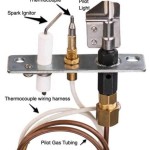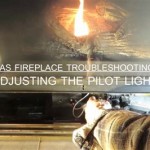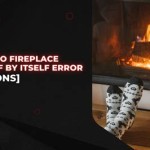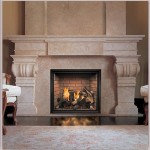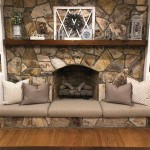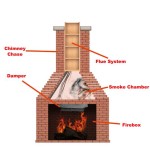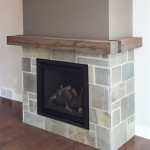Seventh Avenue Fireplace: A Comprehensive Guide
The term "Seventh Avenue Fireplace" might not immediately conjure a specific image to many. Unlike design terms tied to particular historical periods or architectural movements, "Seventh Avenue Fireplace" is a descriptor often associated with a certain aesthetic rather than a definitively codified style. The term generally refers to fireplaces that emphasize a modern, clean, and often luxurious style, reminiscent of the design aesthetic often seen in high-end apartments and showrooms along, or inspired by, Seventh Avenue in New York City. This article aims to explore the characteristics, design elements, and considerations associated with a Seventh Avenue Fireplace, offering a comprehensive guide for those considering incorporating this style into their residential or commercial spaces.
A Seventh Avenue Fireplace is less about strictly adhering to specific historical details and more about capturing a feeling. That feeling centers around sophistication, contemporary lines, and an overall sense of curated elegance. This often translates to employing high-quality materials, focusing on minimalist design principles, and incorporating subtle, yet impactful, details. The goal is to create a fireplace that serves as both a functional heat source and a striking focal point within the room.
Historically, Seventh Avenue in New York City has been a hub for the fashion and design industries. This influence permeates the design choices associated with the Seventh Avenue Fireplace. The emphasis is on creating something timeless and stylish, avoiding trends that might quickly become outdated. This focus on enduring style often involves a careful selection of materials and a meticulous attention to detail in the construction and finishing of the fireplace.
Key Elements of a Seventh Avenue Fireplace Design
Several elements contribute to the overall aesthetic of a Seventh Avenue Fireplace. Understanding these core components is crucial for achieving the desired look. These elements often work in concert to create a sophisticated and visually appealing fireplace design.
Material Selection: The choice of materials is paramount in defining the Seventh Avenue Fireplace. Marble, particularly white or light-colored variations like Carrara or Calacatta, is a frequent choice due to its inherent elegance and ability to reflect light. Other high-end options include honed granite, limestone, and even carefully selected exotic stones. The key is to choose a material that conveys quality and luxury while complementing the overall color palette and style of the room. For a more contemporary twist, smooth concrete or large-format porcelain tiles can be used to create a sleek and minimalist look. The choice of material also extends to the firebox itself, with options ranging from traditional brick or stone to more modern stainless steel or black enamel finishes. Accents, such as brass or brushed nickel trim, can add subtle touches of sophistication.
Clean Lines and Minimalist Design: A defining characteristic of a Seventh Avenue Fireplace is its emphasis on clean lines and minimalist design. Ornate carvings and excessive detailing are typically avoided in favor of a more streamlined aesthetic. The focus is on the inherent beauty of the materials and the overall proportions of the fireplace. This minimalist approach allows the fireplace to integrate seamlessly into a variety of interior design styles, from contemporary to transitional. The simplicity of the design also allows for a greater emphasis on the surrounding décor and furnishings.
Firebox Aesthetics: The firebox of a Seventh Avenue Fireplace is not merely a functional component; it's an integral part of the overall design. Modern gas fireplaces often feature linear burners with decorative glass or ceramic logs, creating a visually appealing flame display. Electric fireplaces can also mimic the look of a real fire with realistic flame effects, offering a convenient and energy-efficient alternative. For traditional wood-burning fireplaces, the firebox can be lined with decorative brick or stone to add texture and visual interest. The hearth, the area in front of the firebox, can be made of the same material as the fireplace surround or a contrasting material to create a focal point.
Considerations for Installation and Functionality
Beyond the aesthetic elements, the installation and functionality of a Seventh Avenue Fireplace are crucial considerations. These factors impact not only the visual appeal but also the safety and efficiency of the fireplace.
Ventilation and Safety: Proper ventilation is paramount for any fireplace, regardless of its design. Wood-burning fireplaces require a functional chimney to safely exhaust smoke and gases. Gas fireplaces require either a direct-vent or vent-free system, depending on local building codes. Electric fireplaces do not require ventilation, making them a versatile option for various spaces. In all cases, it's essential to consult with a qualified professional to ensure that the fireplace is installed correctly and meets all safety standards. Carbon monoxide detectors should be installed in homes with gas or wood-burning fireplaces to provide an added layer of safety.
Heating Efficiency: The heating efficiency of a Seventh Avenue Fireplace depends on the type of fireplace and the fuel source used. Wood-burning fireplaces can provide significant heat but require a constant supply of wood and regular maintenance. Gas fireplaces offer a more convenient and controllable heat source, with various models offering different BTU (British Thermal Unit) outputs. Electric fireplaces are generally less efficient than gas or wood-burning fireplaces but can provide supplemental heat for smaller spaces. The choice of fireplace should be based on the desired level of heating and the overall energy efficiency goals.
Building Codes and Regulations: All fireplace installations must comply with local building codes and regulations. These codes typically address issues such as fire clearances, ventilation requirements, and safety standards. It's crucial to obtain the necessary permits before starting any fireplace installation project. Failure to comply with building codes can result in fines and delays. Consulting with a qualified contractor or architect can help ensure that the fireplace installation meets all applicable requirements.
Integrating a Seventh Avenue Fireplace into Your Design
Integrating a Seventh Avenue Fireplace into a room design requires careful planning and consideration of the surrounding elements. The fireplace should complement the overall style of the room and serve as a seamless extension of the existing décor.
Color Palette and Materials: The color palette of the room should be carefully considered when selecting the materials for the fireplace. A neutral color palette, such as white, gray, or beige, often works well with a Seventh Avenue Fireplace, allowing the fireplace to stand out without overwhelming the space. The materials used in the fireplace should complement the other materials in the room, such as the flooring, furniture, and wall coverings. For example, if the room features hardwood floors, a fireplace made of marble or limestone can create a harmonious and cohesive look.
Furniture Arrangement and Focal Point: The fireplace should be positioned as the focal point of the room, with the furniture arranged to maximize its visual impact. A seating area can be centered around the fireplace, creating a comfortable and inviting space for relaxation and socializing. The furniture should be scaled appropriately to the size of the fireplace and the room. Large, oversized furniture can overwhelm a small fireplace, while small, delicate furniture can get lost in a large room. The placement of artwork and accessories should also be carefully considered, with the goal of enhancing the overall aesthetic of the fireplace and the room.
Lighting and Ambiance: Lighting plays a crucial role in creating the desired ambiance around a Seventh Avenue Fireplace. Soft, warm lighting can enhance the cozy and inviting atmosphere of the fireplace, while brighter, more focused lighting can highlight its architectural details. Dimmable lights can be used to adjust the lighting levels according to the mood and the occasion. Candles and other decorative lighting elements can also be used to add warmth and visual interest to the fireplace area. The type of lighting should complement the overall style of the room and the fireplace.
In summary, a Seventh Avenue Fireplace represents a refined approach to fireplace design, prioritizing clean lines, high-quality materials, and a minimalist aesthetic. By carefully considering the key elements, installation requirements, and integration strategies outlined in this guide, individuals can successfully incorporate this stylish and sophisticated feature into their homes, creating a focal point that elevates the overall design and ambiance of the space.

Double Curio Fireplace Country Door

Black Media Center Fireplace Seventh Avenue

Signature Hand Carved Fireplace Seventh Avenue

Faux Stone Electric Fireplace Rustic Ginny S

Double Curio Fireplace Seventh Avenue

Faux Brick Fireplace Seventh Avenue

Signature Fireplace From Seventh Avenue Faux Stone Fireplaces Carved

Double Curio Fireplace Seventh Avenue

Compact Storage Fireplace With Basket Seventh Avenue

Electric Fireplace Stove 1500w With Remote Country Door
Related Posts

